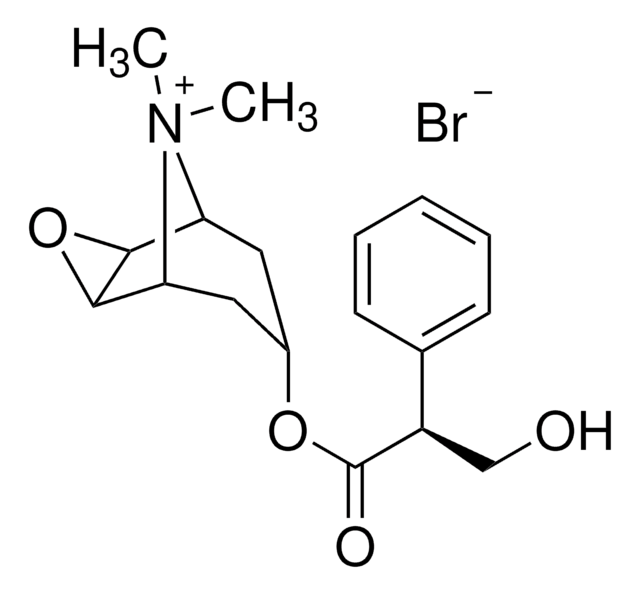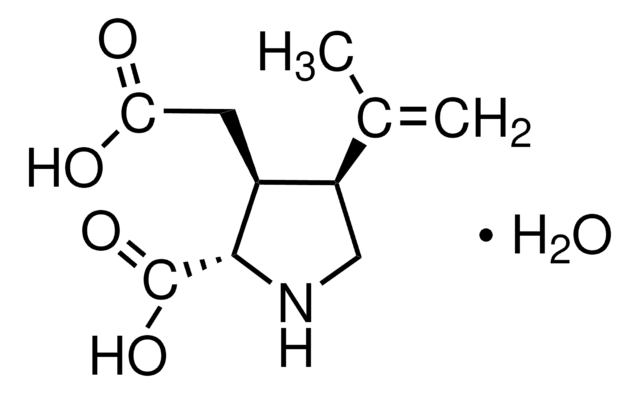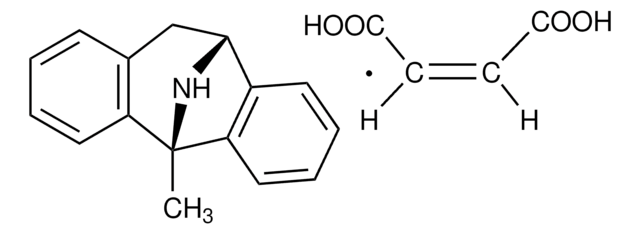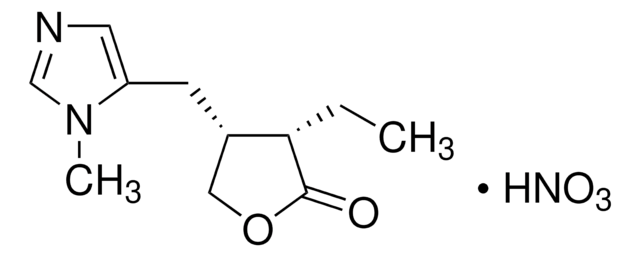P6503
Pilocarpine hydrochloride
≥99% (titration), powder, muscarinic acetylcholine receptor agonist
Synonym(s):
(3S,4R)-4,5-Dihydro-3-ethyl-4-(1-methyl-1H-imidazol-5-ylmethyl)-2(3H)-furanone hydrochloride
About This Item
Recommended Products
Product Name
Pilocarpine hydrochloride, ≥99% (titration), powder
Quality Level
Assay
≥99% (titration)
form
powder
technique(s)
HPLC: suitable
gas chromatography (GC): suitable
color
white
mp
202-205 °C (lit.)
solubility
H2O: 100 mg/mL
application(s)
forensics and toxicology
veterinary
relevant disease(s)
epilepsy
SMILES string
Cl.CC[C@H]1[C@H](COC1=O)Cc2cncn2C
InChI
1S/C11H16N2O2.ClH/c1-3-10-8(6-15-11(10)14)4-9-5-12-7-13(9)2;/h5,7-8,10H,3-4,6H2,1-2H3;1H/t8-,10-;/m0./s1
InChI key
RNAICSBVACLLGM-GNAZCLTHSA-N
Gene Information
human ... CHRM1(1128) , CHRM2(1129) , CHRM3(1131) , CHRM4(1132) , CHRM5(1133)
Looking for similar products? Visit Product Comparison Guide
Application
Biochem/physiol Actions
Features and Benefits
Caution
Other Notes
Signal Word
Danger
Hazard Statements
Precautionary Statements
Hazard Classifications
Acute Tox. 2 Inhalation - Acute Tox. 2 Oral
Storage Class Code
6.1A - Combustible acute toxic Cat. 1 and 2 / very toxic hazardous materials
WGK
WGK 3
Choose from one of the most recent versions:
Already Own This Product?
Find documentation for the products that you have recently purchased in the Document Library.
Customers Also Viewed
Our team of scientists has experience in all areas of research including Life Science, Material Science, Chemical Synthesis, Chromatography, Analytical and many others.
Contact Technical Service





![[D-Ala2, N-Me-Phe4, Gly5-ol]-Enkephalin acetate salt ≥97% (HPLC)](/deepweb/assets/sigmaaldrich/product/structures/227/014/768064c2-9ae6-47bd-8550-e2aa5c3b61de/640/768064c2-9ae6-47bd-8550-e2aa5c3b61de.png)




